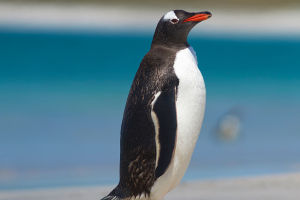Bird feathers, crucial to avian survival, are marvels of natural engineering.
Their primary functions include insulation, flight, and communication.
However, despite their remarkable adaptability, feathers are not impervious to getting wet.
Anatomy of Bird Feathers
Feathers are complex structures composed of a central shaft called the rachis and branching barbs. The barbs, in turn, have smaller structures known as barbules that interlock to form a smooth, continuous surface.
This interlocking structure is vital for maintaining feather integrity and functionality. Feathers are made primarily of keratin, a protein that provides both strength and flexibility.
How Feathers Get Wet
Bird feathers get wet through various mechanisms, each affecting their functionality and the bird's well-being in different ways. One common method is direct exposure to water sources.
Birds often bathe in ponds, rivers, or even rain, which can soak their feathers. Another way feathers become wet is through environmental exposure, such as flying through rain or dew settling on feathers.
When a bird bathes, it typically engages in a specific behavior called "bathing," which involves immersing itself in water and then shaking vigorously to dislodge excess water.
This process helps to clean the feathers and remove parasites. Birds also use their beaks to spread oil from the uropygial gland, located near the base of the tail, over their feathers. This oil acts as a water repellent, though it is not always completely effective.
Effects of Wet Feathers
Wet feathers can have significant effects on a bird's physiology and behavior. One primary concern is the loss of insulation. Feathers provide essential insulation by trapping air close to the bird's body.
When feathers become wet, their insulating properties diminish, leading to potential hypothermia in cold conditions. Birds may seek shelter to maintain their body temperature or engage in behaviors like sunbathing to aid in drying.
Flight is another critical aspect affected by wet feathers. Birds rely on the aerodynamic properties of their feathers for efficient flight.
Wet feathers can become heavy and lose their aerodynamic properties, making flight more laborious and less efficient. This can impact a bird's ability to escape predators, find food, or migrate.
In addition to these functional impacts, wet feathers can also affect a bird's social interactions. In some species, feather condition plays a role in courtship displays and mate selection. Wet feathers can alter the appearance of birds, potentially influencing mating behaviors and social dynamics within flocks.
Adaptations and Strategies
Birds have evolved various adaptations to cope with the challenges posed by wet feathers. Many species have specialized behaviors and physical traits to manage water exposure.
For example, some birds have highly efficient preening behaviors, using their beaks to meticulously arrange and clean their feathers. The uropygial gland's oil secretion is another critical adaptation that helps to reduce water absorption and maintain feather health.
Certain birds, such as ducks and other waterfowl, possess feathers that are highly adapted to aquatic environments.
Their feathers have an additional layer of waterproofing, including specialized structures that prevent water from penetrating their down feathers. These adaptations are crucial for their survival in aquatic habitats.


